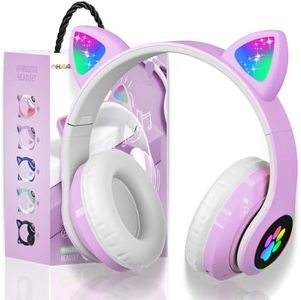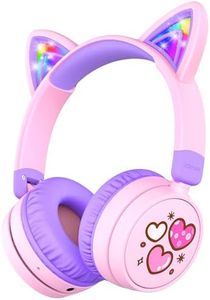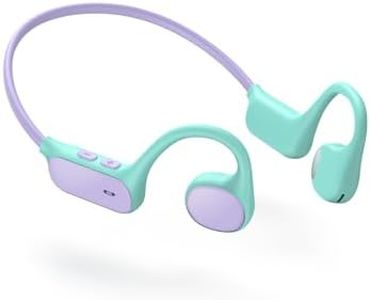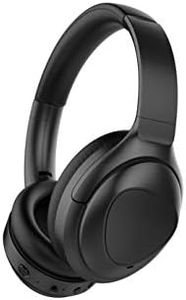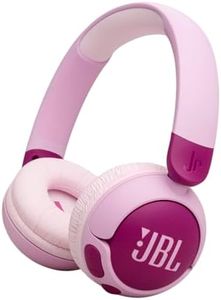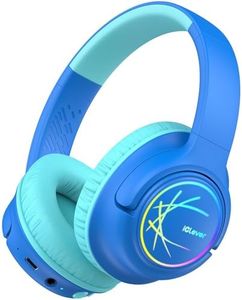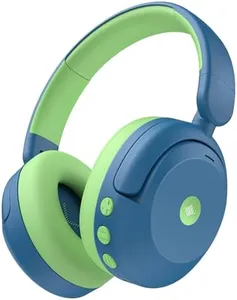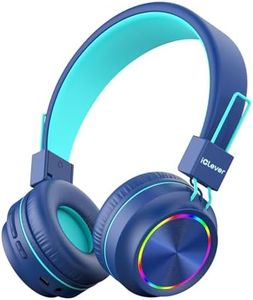We Use CookiesWe use cookies to enhance the security, performance,
functionality and for analytical and promotional activities. By continuing to browse this site you
are agreeing to our privacy policy
10 Best Bluetooth Kids Headphones
From leading brands and best sellers available on the web.Buying Guide for the Best Bluetooth Kids Headphones
Choosing Bluetooth headphones for kids is about balancing safety, comfort, durability, and sound quality. Kids’ headphones need to be safe for little ears—so volume limits are key—and made to handle active daily use. Think about where and how your child will use them: at home, at school, or on trips. Every family and child will have unique needs, so focus on practical features that match your lifestyle and your child’s age.Volume LimitingVolume limiting is a safety feature that keeps sound levels below a set decibel limit to protect children’s hearing. Most kids’ headphones are designed to not go above 85 decibels, which is considered safe for young ears even with longer listening times. Some models have switchable limits (like 85 or 94 decibels) for older kids. Younger children should always have headphones that cannot exceed 85 decibels. For slightly older kids who use headphones in noisy places, you might consider a model with a slightly higher limit but always use the safest setting when possible.
Fit and ComfortFit and comfort refer to how the headphones sit on your child's head and ears. Comfortable headphones have padded ear cups and adjustable headbands to ensure a snug fit without pinching or slipping. Ear cups come in 'on-ear' (sit on the ear) or 'over-ear' (cover the whole ear) styles. For young kids (especially under 10), look for soft cushioning and an adjustable, lightweight band. The right size ensures they’ll wear the headphones happily for longer periods, and there’s less chance of them falling off during play or travel.
Battery LifeBattery life tells you how long the headphones will last on a single charge. For Bluetooth kids’ headphones, typical battery life ranges from 10 to over 30 hours. Short battery life is fine for brief listening sessions or if you always remember to charge, but longer battery life is better for trips, school, or less frequent charging routines. Think about your child’s habits: if they use headphones mainly at home, short battery life might be enough; for travel or long days out, look for longer battery life so they aren’t left without music or audio mid-day.
DurabilityDurability measures how well headphones stand up to drops, twists, and the rough treatment kids often give their gear. Durable headphones are made from flexible plastics, have reinforced cables (if there’s a wired option), and use sturdy hinges and headbands that don’t break easily. For young children or kids who are rough with their things, prioritize models with ‘kid-proof’ or ‘bendable’ design. If your child is careful or older, you might prioritize other features like sound or comfort a bit more.
Bluetooth ConnectivityBluetooth connectivity allows the headphones to connect wirelessly to devices like tablets, smartphones, or computers. Look for headphones that support versions like Bluetooth 4.0 or above for stable connections and decent range. Some headphones also include wired backup—helpful if the battery dies or for use during flights. For tech-savvy kids who multitask with different devices, switching between devices easily can be a real benefit. Otherwise, as long as the headphones pair easily with your main device, simplicity is best.
Parental Controls and SafetySome kids’ headphones include parental controls, like limits on maximum volume or usage tracking. While not always essential, these features give parents peace of mind, especially for younger users. If your child uses streaming apps or attends remote classes, extra controls can help you monitor and manage usage—just right for cautious or younger families.
Design and StyleKids may be more excited to wear headphones with fun colors, animal ears, or character branding. While style doesn’t impact technical performance, it can encourage children to use their headphones responsibly and makes them feel more personal. Letting your child have some input into the look of their headphones can lead to happier listening and better care of the product.

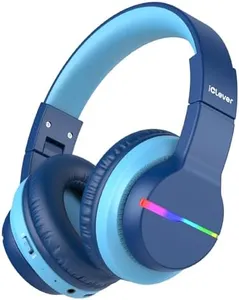

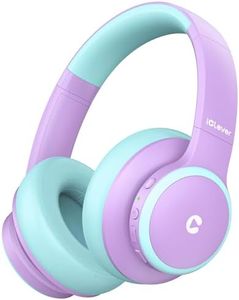
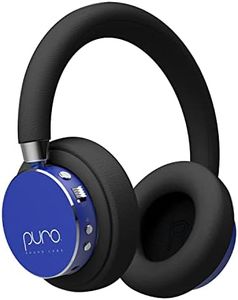
![Belkin SoundForm Mini Kids Wireless Headphones w/Built-in Microphone, 30H of Playback Time, & Fun Stickers - Over-Ear Headsets for Online Learning, School, Travel, iPhone, iPad, Galaxy & More [Blue]](https://images-proxy.bestreviews.guide/VAcMIW12yG2d6GzIaBXMNkEu7Lw=/0x300/https://m.media-amazon.com/images/I/41xnsiye+3L._AC_CX679_.jpg)
